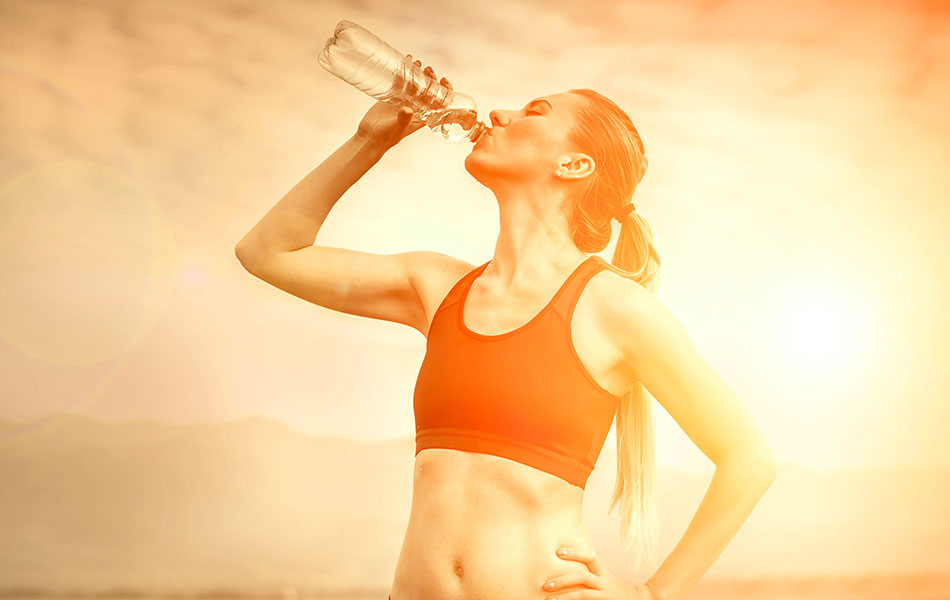Let’s Talk About Heat Training and Heat Exhaustion

Hey Angels and Alphas,
We’re all aware that, during the warmer months (or downright hot months,) we all tend to spend more time outdoors. We’re jogging, cycling, running, relaxing on the beach, enjoying the sun, and all of the perks that come with the warm, summer weather.
But for those of you who take the extra step and actually train and perform intense exercises in the sun, you should know that doing this carries some extra risks.
With all the training in the hot, summer weather comes the increased risk of developing heat exhaustion, heatstroke, or other dangerous illnesses that can be extremely harmful (or even deadly.)
That’s why it’s important for us to take measures to decrease the risks and avoid these complications, and even if they do occur, we must still learn to recognize the symptoms and take appropriate actions so we can stay safe.
Let’s talk about heat exhaustion for a second.
Heat exhaustion is not uncommon in warm climates, yet it can be a very serious, even life-threatening problem. Experts note that exertion-related heat illness is the number one cause of death in young athletes. It also affects laborers, military personnel, firefighters, and other people who are required to exert themselves in conditions of extreme heat.
When it comes to the signs and symptoms of heat exhaustion, they may vary. They include an increased heart rate, nausea, vomiting, mild to moderate dehydration, weakness, fatigue, and more. Sometimes, dizziness and mild confusion will also occur, and in some rare cases, people might even lose consciousness for a brief period of time.
If you or another person you know is suffering from heat exhaustion, it’s absolutely vital that steps are taken to cool the body off immediately.
This means removing excess clothing and equipment, immersing the person or athlete in cold water (if that’s possible,) or a tub of water anywhere in between the temperatures of 2 and 16 degrees Celsius.
If immersing the body in cold water is not possible, you should make an effort to rapidly initiate an alternative method of cooling. This can include applying ice packs to certain parts of the body where the largest blood vessels are located (such as near the groin or under the arms.)
Another method could be spraying water over the person’s body or using fans to blow air over moist skin so a process known as evaporative cooling with start to take place. Water should be reapplied as needed, fanning should be performed continuously, and most importantly, the vital signs and mental status of the person should be assessed.
This can all sound pretty scary, even anxiety-inducing, for some people who are out and active in the sun all summer.
So what are some steps we can take to prevent this so we don’t need to resort to cold tubs of water, cooling fans, and even the sometimes necessary medical assistance?
As with all efforts to stay active in the sun, there are five basic guidelines you should follow so you can stay safe and productive. They include:
Hydrating properly. Always take breaks to drink plenty of water, regardless of where you are. If you’re outdoors and you’re running, you should run for about a mile and then walk the next mile so you have time to drink some water, cool down, and allow the water to do its magic on your body.
Pay attention to timing. Always try to exercise either early in the morning or late in the evening.
Choose the right location. If you can, do a water workout inside the pool or just exercise in a shadier area where there is less direct exposure to the sun.
Pick out your outfit with the heat in mind. Always wear loose-fitting clothing that allows you to keep yourself cool and evaporate unnecessary sweat. You can also choose outfits that are light in color because this reflects the heat, as opposed to dark clothing that absorbs it.
Take it slow. If you’re training in the sun, take things *very* slowly. Make sure you are properly acclimatized to the hot weather and that you’re actually used to exercising outdoors. If you’re not, start out slowly and build your way up so you can increase the intensity and length of your workouts so your body has time to adapt to the heat.
The bottom line is…
The summer heat is no joke. While it does add to the fun of the season and opens up the doors to countless activities, heat illnesses still exist and they’re dangerous. If you’re exercising in warm environments, take the necessary precautions and wear the right (light) clothing, drink plenty of water, take breaks, and try to avoid the heat as much as possible until you gradually build up a tolerance for it.





